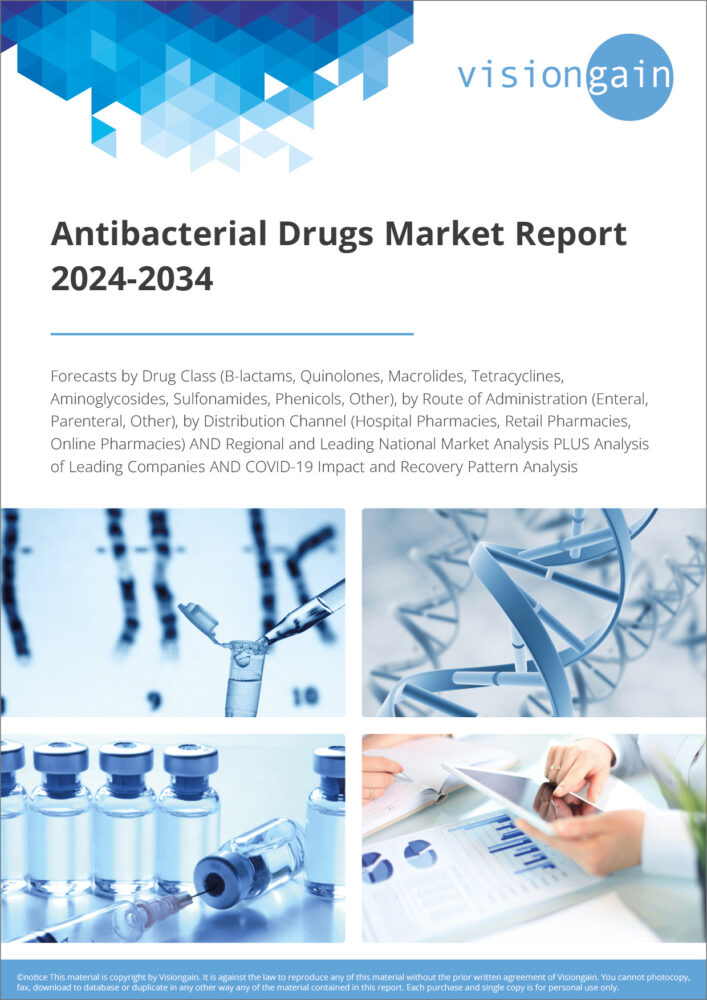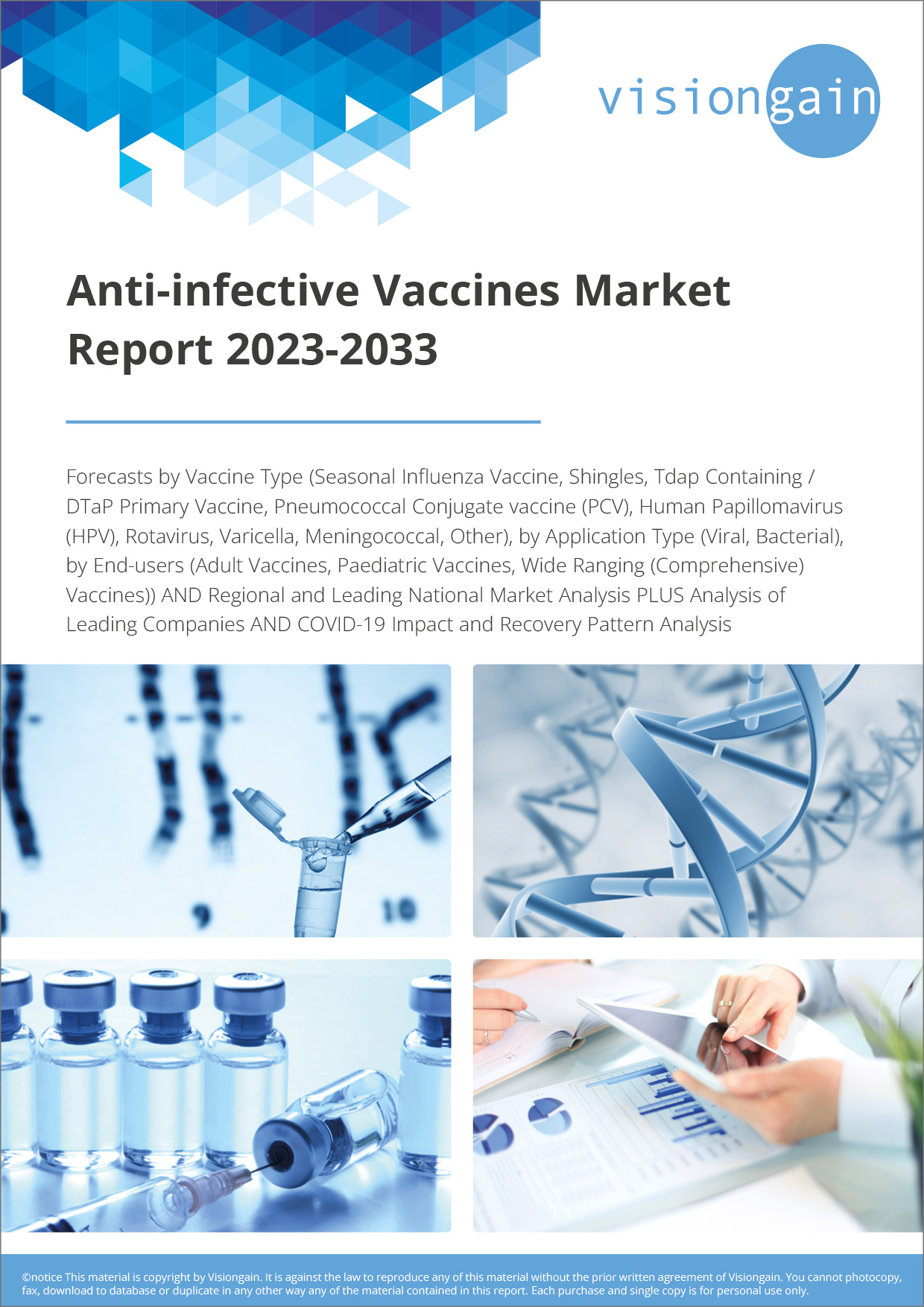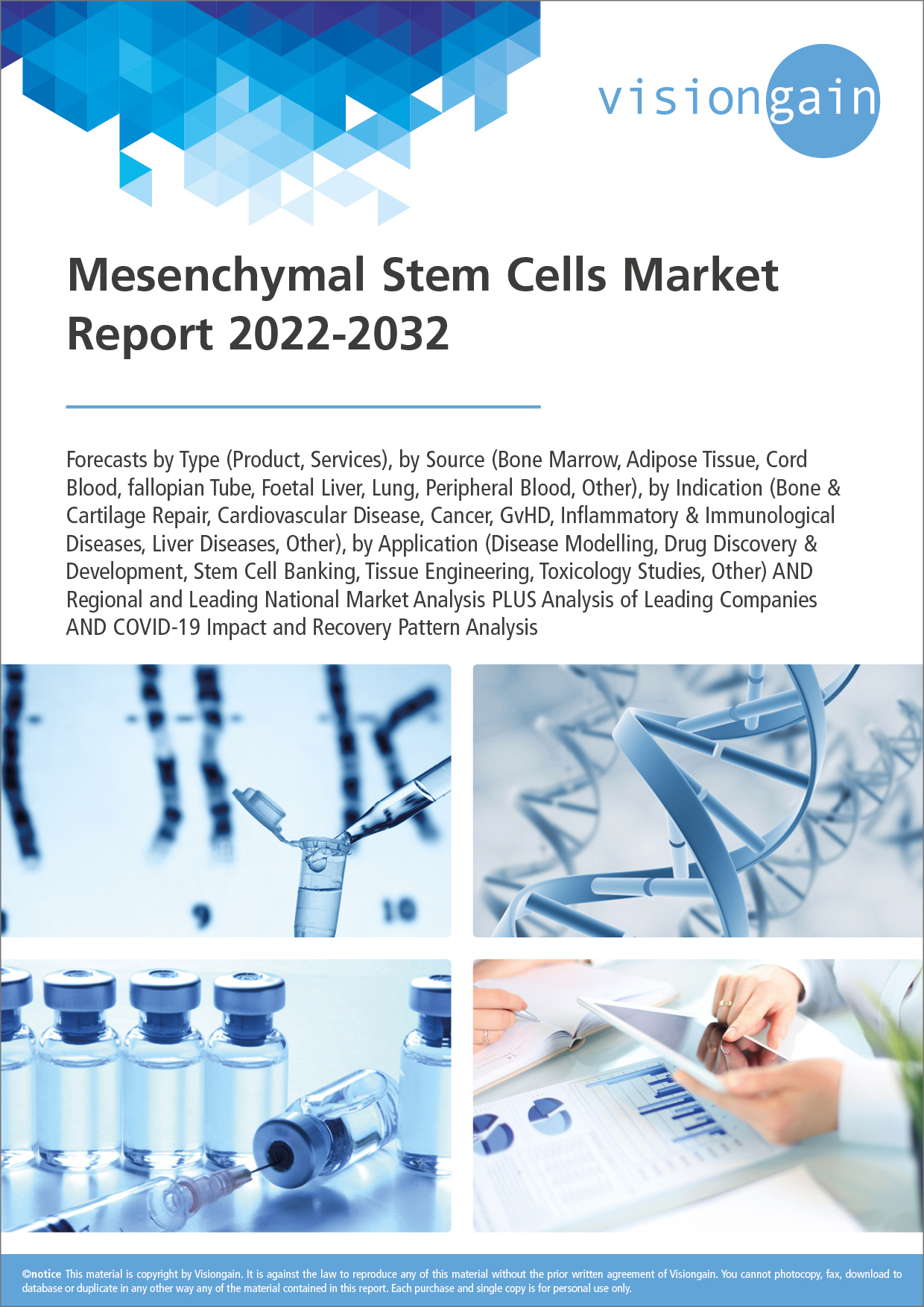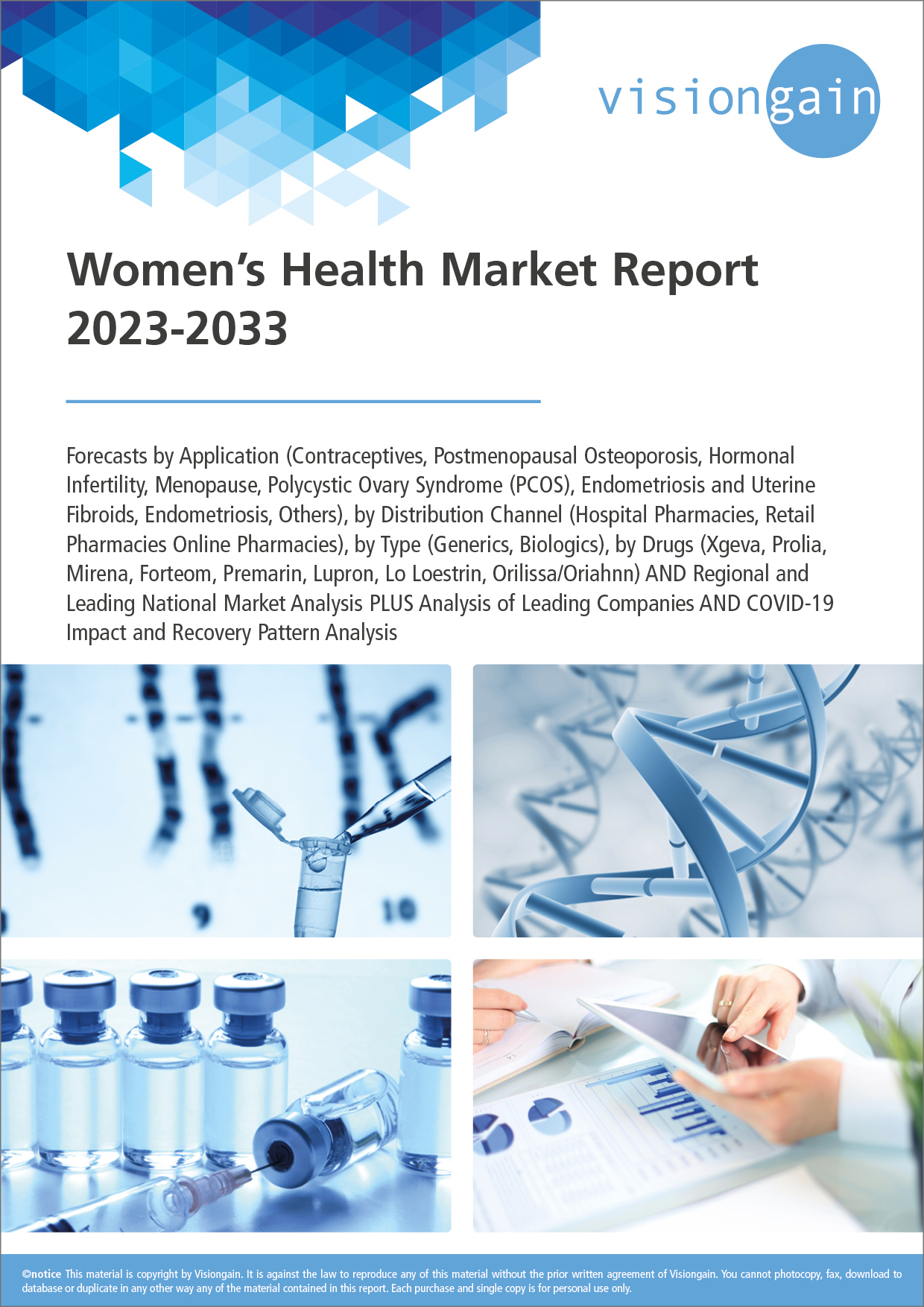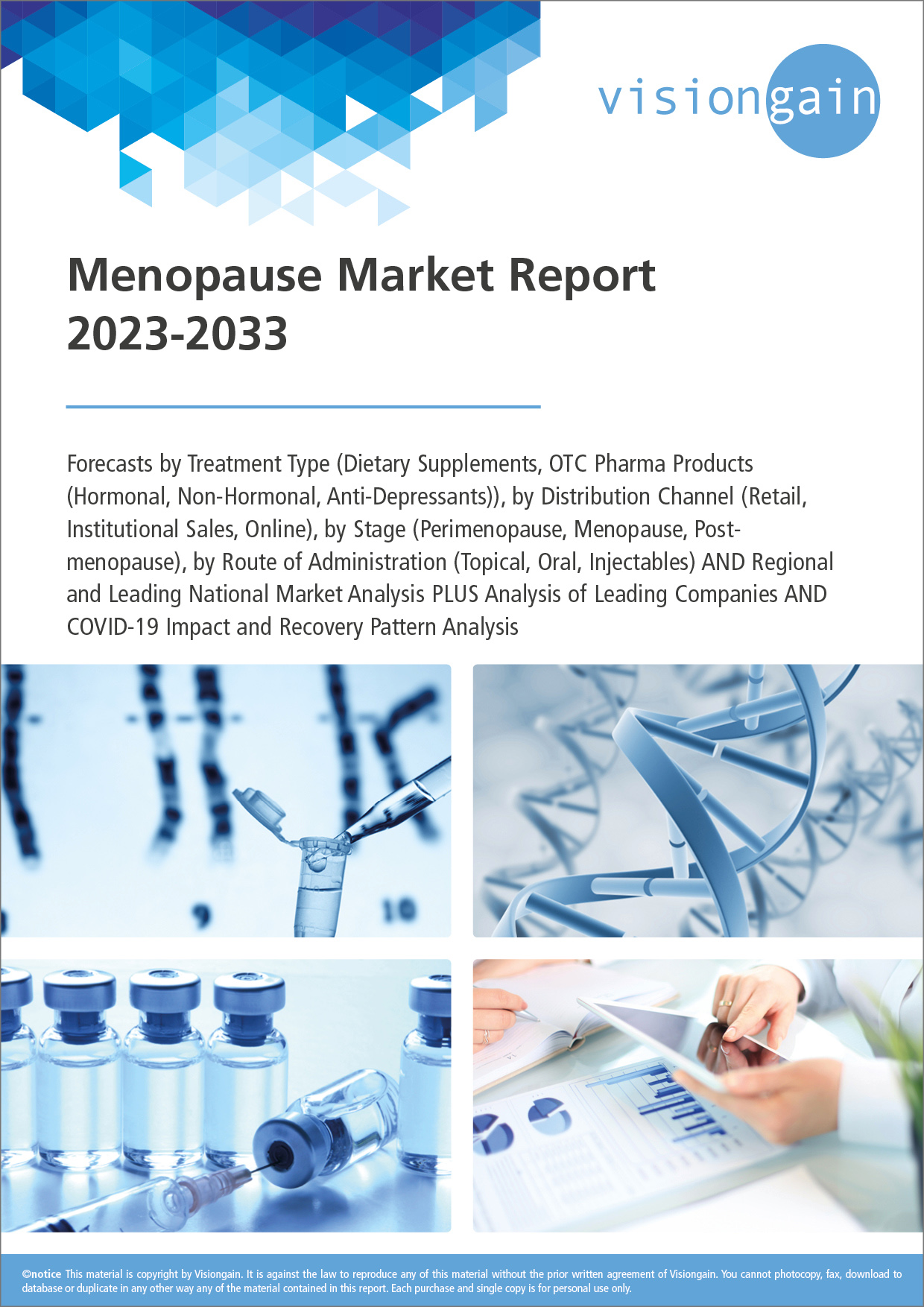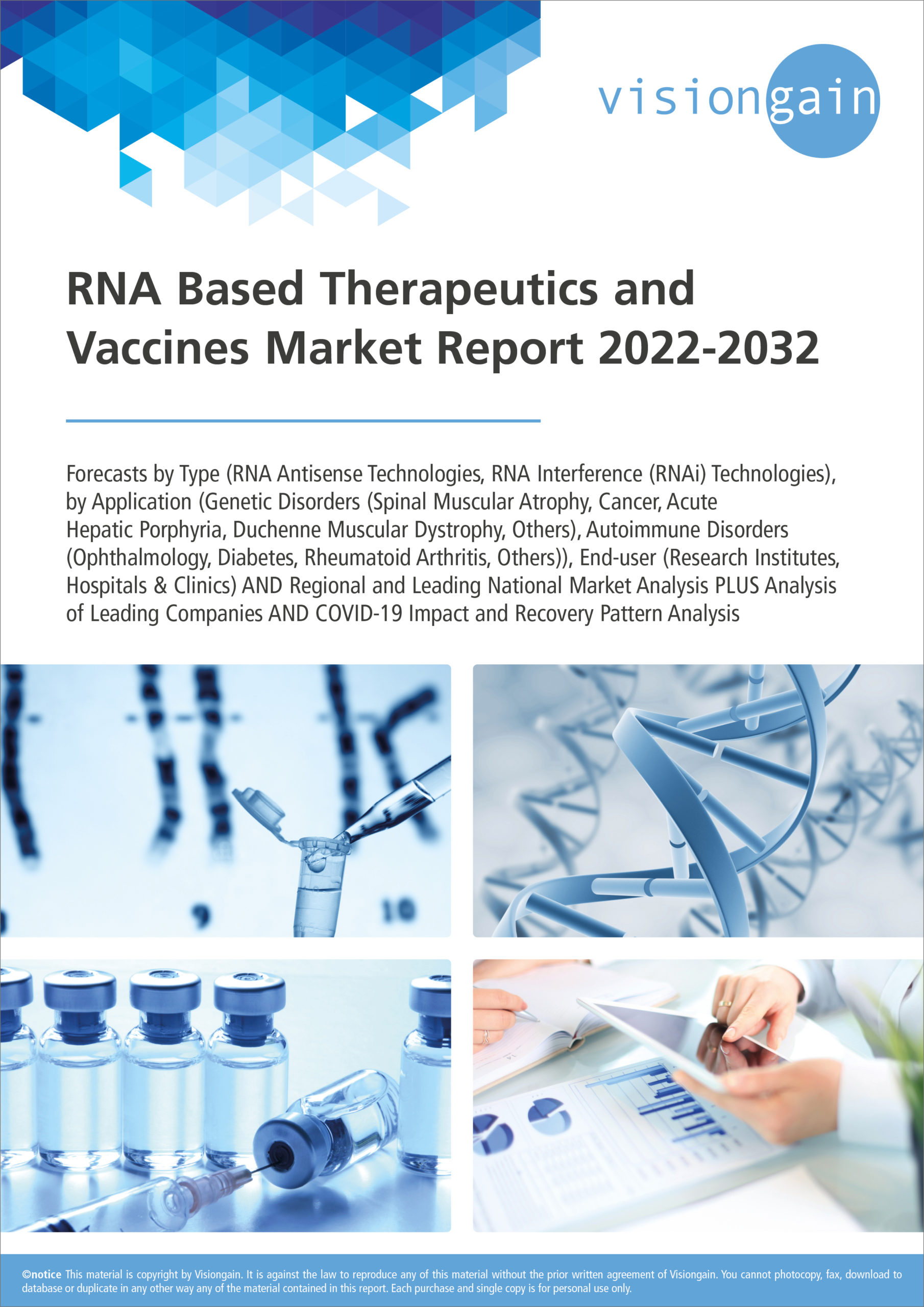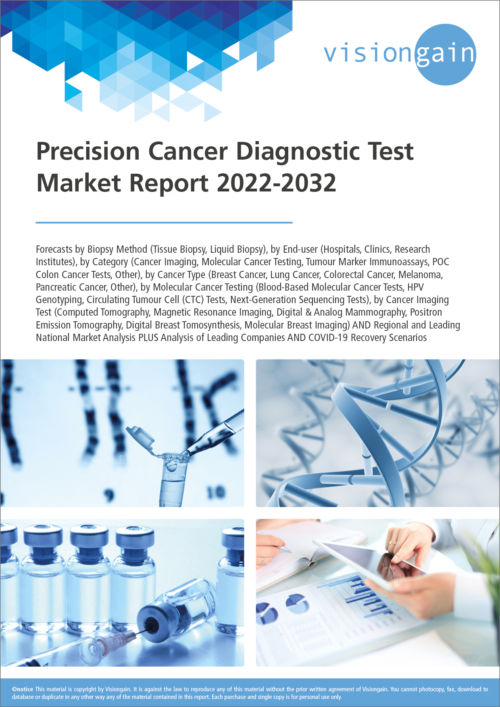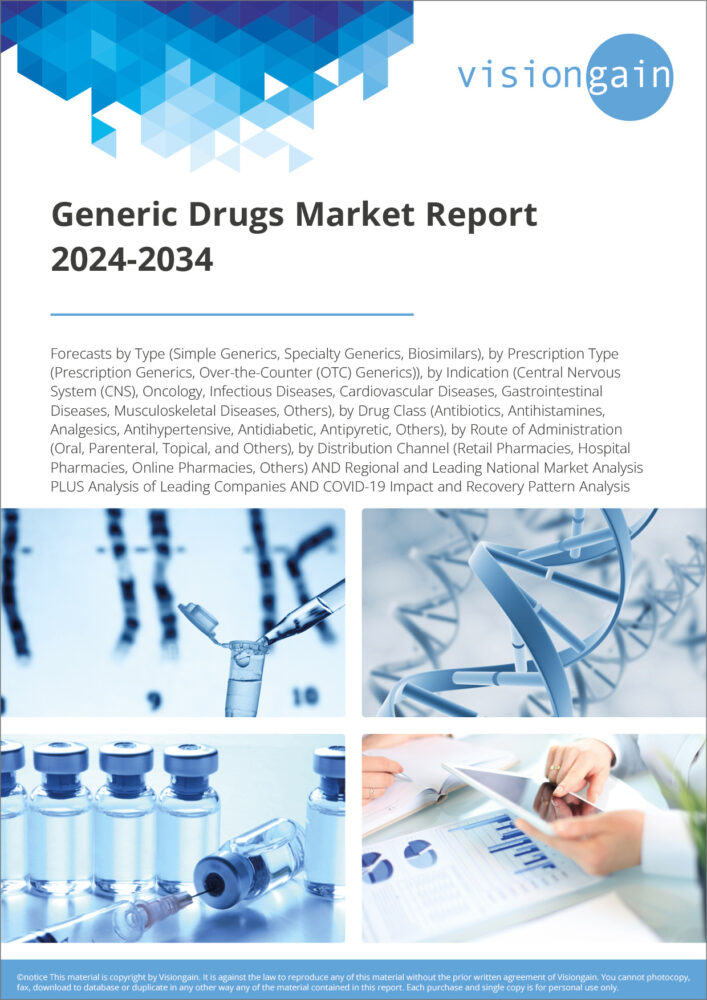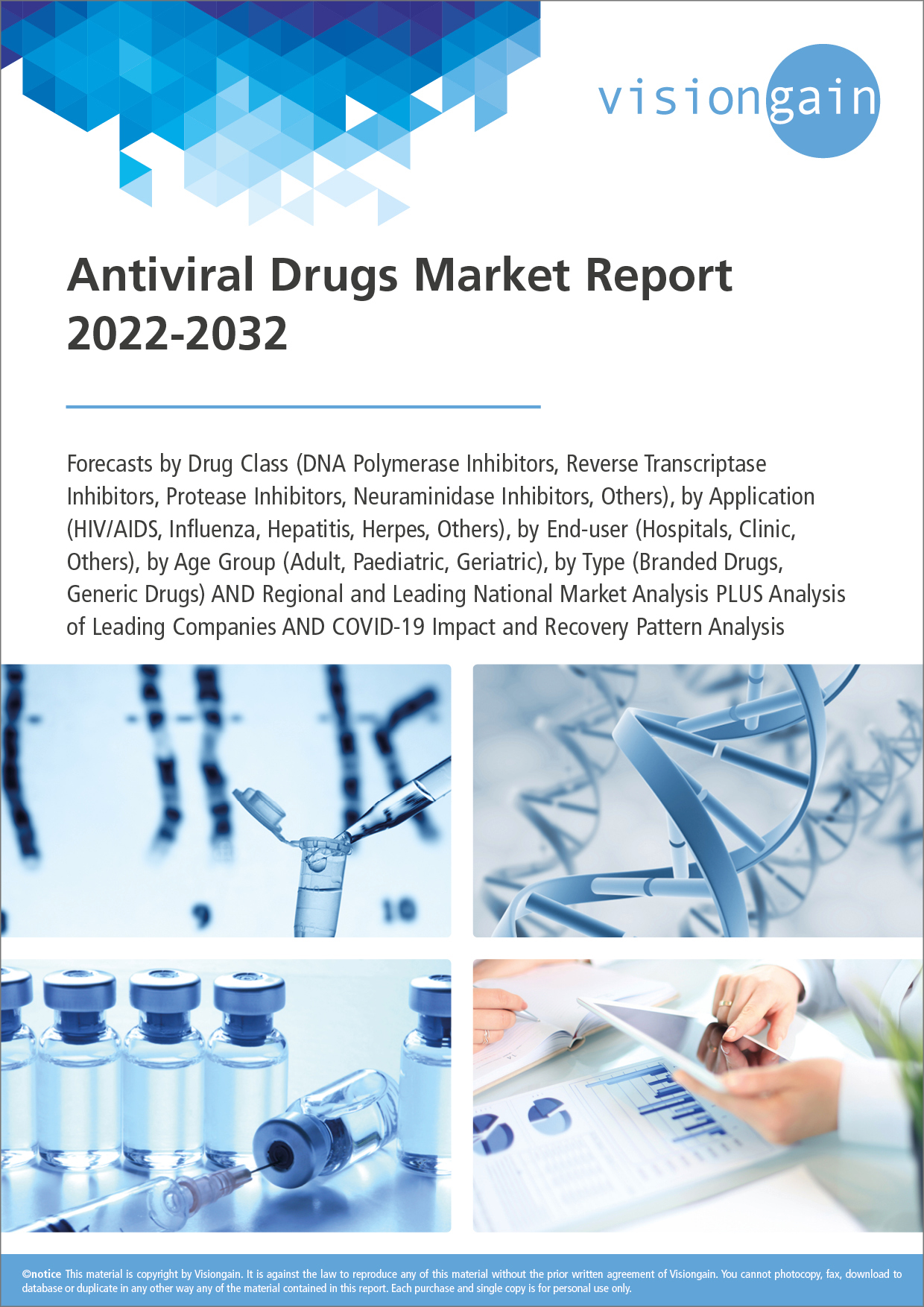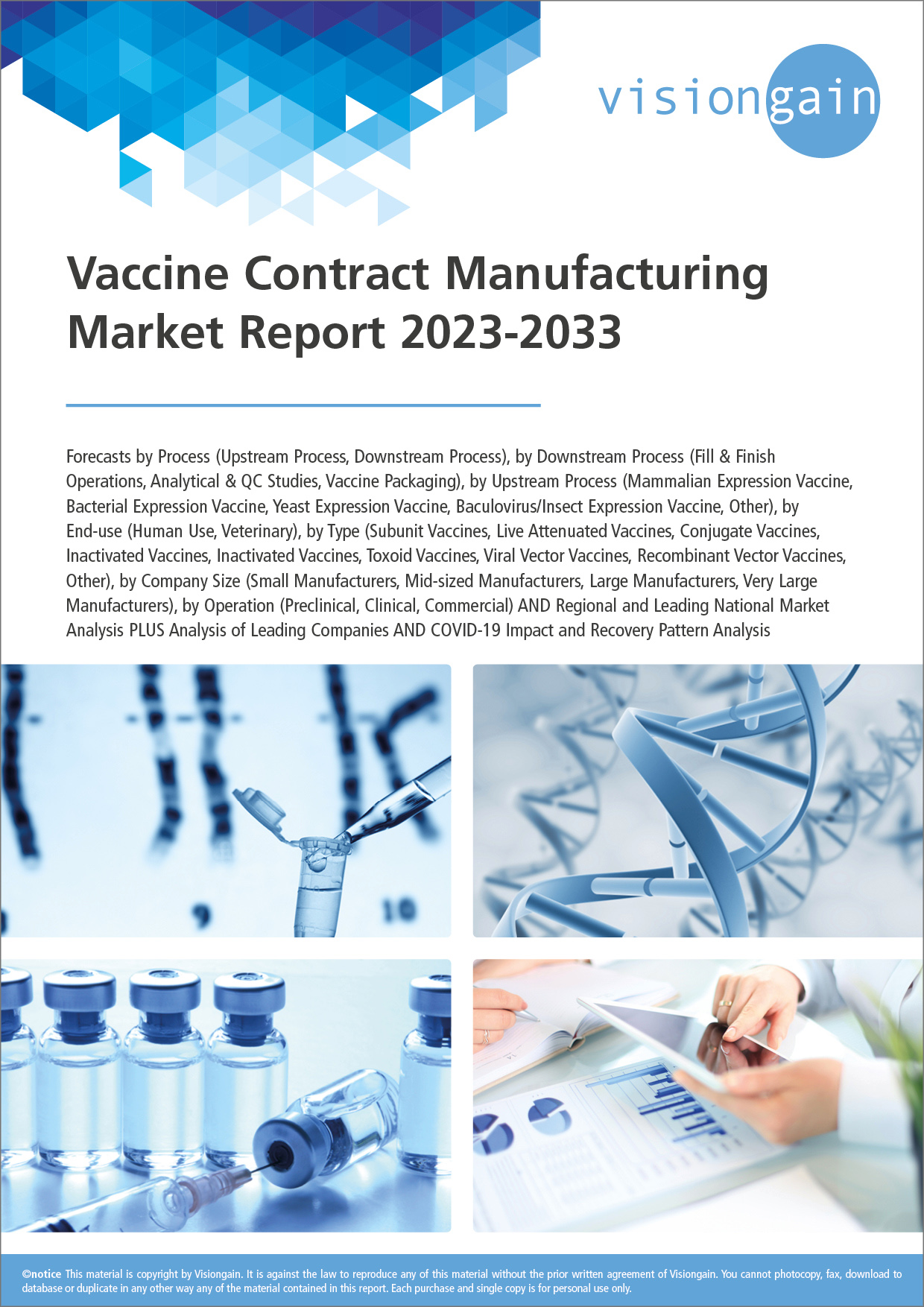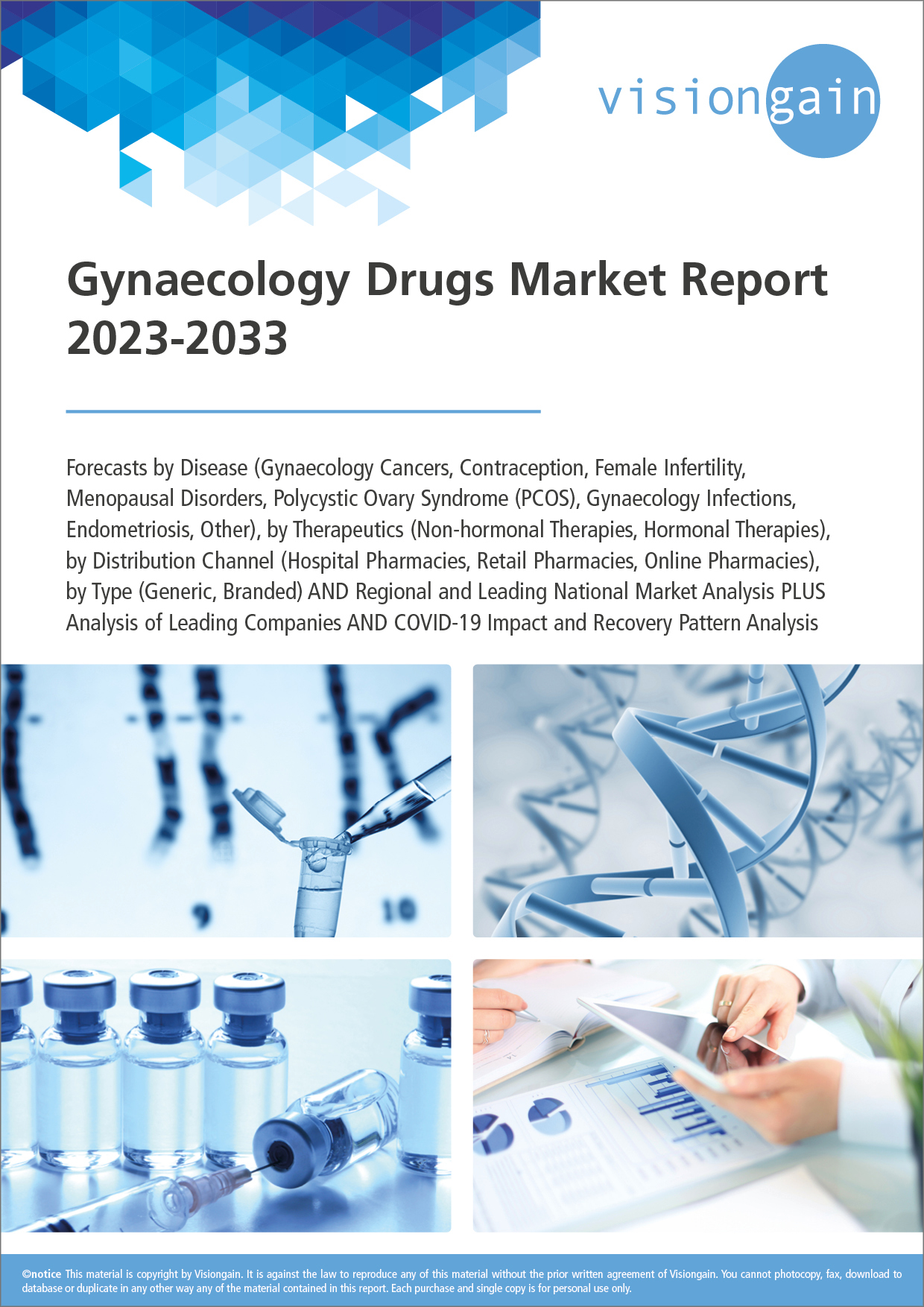The Antibacterial drugs Market Report 2024-2034: This report will prove invaluable to leading firms striving for new revenue pockets if they wish to better understand the industry and its underlying dynamics. It will be useful for companies that would like to expand into different industries or to expand their existing operations in a new region.
Difficulties in R&D
Antibacterial drug research and development has been impacted due to limited attractiveness of the market. Major factors that restrict entry of companies are low profit margins for short-course antibacterial treatment as compared to chronic disease drugs, limited marketing lifespan due to emerging resistance, availability of cheap generic drugs, necessary healthcare stewardship to limit antibacterial drug use. Hence, many public–private partnerships have been implemented with government, academia, and the pharmaceutical industry to provide financial and technical support for developing antibacterial drugs. According to WHO, there were only 27 new antibiotics in clinical development against priority pathogens in 2021 as compared 31 in 2017. In the preclinical stage, the number of products has remained constant over the last 3 years. Of the 27 antibiotics in clinical trial stage, only 6 fulfil at least one of WHO’s criteria for innovation. The lack of innovation weakens the effectiveness of the limited number of new antibiotics.
Shortage of antibiotics
According to the US Pharmacopeia Medicine Supply Map Analysis, there is an increased shortage risk for antibiotics, supply chain risks that can lead to antimicrobial resistance. Antibiotics shortage is 42% more likely compared to all other drugs. The analysis is derived from 40 external datasets and proprietary information about the use of USP quality standards, covering 92% of generic medicines approved in the US. Antimicrobial shortage affects addressing the issue of AMR. As per the study, of all types of antibacterial drugs, cephalosporin are at elevated risk for shortage, driven by price. Additionally, 40% of active pharmaceutical ingredients (APIs) used for cephalosporin are currently in shortage. Furthermore, poor-quality medicines drive antimicrobial resistance (AMR) by exposing microorganisms in the body to sub-therapeutic doses of medicines. This leads to patient not receiving enough of the medication’s active pharmaceutical ingredient (API), helping the pathogen to evolve and form more resistant strains can emerge.
Likewise, the European Commission, the Heads of Medicines Agencies (HMA), and the European Medicines Agency (EMA) issued recommendations in July 2023 to prevent shortages of antibiotics (e.g., amoxicillin, amoxicillin/clavulanic acid, penicillin, azithromycin, clarithromycin, ceftriaxone, cefotaxime and piperacillin-tazobactam) crucial in the treatment of respiratory infections. The recommendations were developed by the Executive Steering Group on Shortages and Safety in Medicinal Products (MSSG). EMA and the European Health Emergency Preparedness and Response Authority (HERA) will work with marketing authorization controllers to ensure first and second-line antibiotics for respiratory infections to match demand and avoid shortages.
What Questions Should You Ask before Buying a Market Research Report?
• How is the Antibacterial drugs market evolving?
• What is driving and restraining the Antibacterial drugs market?
• How will each antibacterial drug submarket segment grow during the forecast period and how much revenue will these submarkets account for in 2034?
• How will the market shares for each Antibacterial drugs submarket develop from 2024 to 2034?
• What will be the main driver for the overall market from 2024 to 2034?
• Will leading Antibacterial drugs markets broadly follow the macroeconomic dynamics, or will individual national markets outperform others?
• How will the market shares of the national markets change by 2034 and which geographical region will lead the market in 2034?
• Who are the leading players and what are their prospects over the forecast period?
• What are the Antibacterial drugs projects for these leading companies?
• How will the industry evolve during the period between 2024 and 2034? What are the implications of Antibacterial drugs projects taking place now and over the next 10 years?
• Is there a greater need for product commercialisation to further scale the Antibacterial drugs market?
• Where is the Antibacterial drugs market heading and how can you ensure you are at the forefront of the market?
• What are the best investment options for new product and service lines?
• What are the key prospects for moving companies into a new growth path and C-suite?
You need to discover how this will impact the Antibacterial drugs market today, and over the next 10 years:
• Our 269-pages report provides 113 tables, 192 charts and graphs exclusively to you.
• The report highlights key lucrative areas in the industry so you can target them – NOW.
• It contains in-depth analysis of global, regional and national sales and growth.
• It highlights for you the key successful trends, changes and revenue projections made by your competitors.
This report tells you TODAY how the antibacterial drugs market will develop in the next 10 years, and in line with the variations in COVID-19 economic recession and bounce. This market is more critical now than at any point over the last 10 years.
Forecasts to 2034 and other analyses reveal commercial prospects
• In addition to revenue forecasting to 2034, our new study provides you with recent results, growth rates, and market shares.
• You will find original analyses, with business outlooks and developments.
• Discover qualitative analyses (including market dynamics, drivers, opportunities, restraints and challenges), cost structure, impact of rising Antibacterial drugs prices and recent developments.
This report includes data analysis and invaluable insight into how COVID-19 will affect the industry and your company. Four COVID-19 recovery patterns and their impact, namely, “V”, “L”, “W” and “U” are discussed in this report.
Segments Covered in the Report
Drug Class
• Β-lactams
• Quinolones
• Macrolides
• Tetracyclines
• Aminoglycosides
• Sulfonamides
• Phenicols
• Other
Route of Administration
• Enteral
• Parenteral
• Other
Distribution Channel
• Hospital Pharmacies
• Retail Pharmacies
• Online Pharmacies

In addition to the revenue predictions for the overall world market and segments, you will also find revenue forecasts for five regional and 20 leading national markets:
North America
• U.S.
• Canada
Europe
• Germany
• UK
• France
• Italy
• Spain
• Rest of Europe
Asia Pacific
• China
• Japan
• India
• Australia
• South Korea
• Rest of Asia Pacific
Latin America
• Brazil
• Mexico
• Rest of Latin America
MEA
• GCC
• South Africa
• Rest of MEA
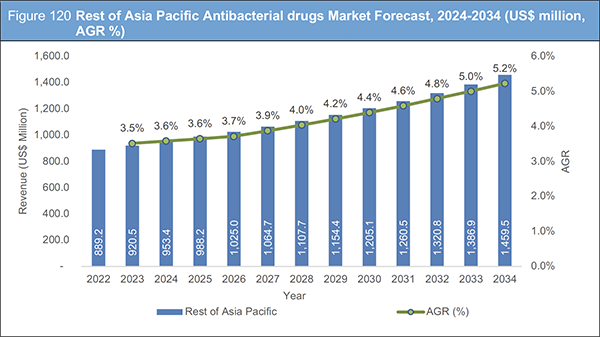
Need industry data? Please contact us today.
The report also includes profiles and for some of the leading companies in the Antibacterial Drugs Market, 2024 to 2034, with a focus on this segment of these companies’ operations.
Leading companies profiled in the report
• AbbVie Inc.
• AstraZeneca
• Bayer AG
• Bristol-Myers Squibb Company
• GlaxoSmithKline plc
• Johnson & Johnson
• Merck & Co., Inc.
• Novartis AG
• Pfizer Inc.
• Sanofi
Overall world revenue for Antibacterial drugs Market, 2024 to 2034 in terms of value the market will surpass US$ 39,178.7 million in 2024, our work calculates. We predict strong revenue growth through to 2034. Our work identifies which organizations hold the greatest potential. Discover their capabilities, progress, and commercial prospects, helping you stay ahead.
How will the Antibacterial drugs Market, 2024 to 2034 report help you?
In summary, our 260-pages report provides you with the following knowledge:
• Revenue forecasts to 2034 for Antibacterial drugs Market, 2024 to 2034 Market, with forecasts for drug class, route of administration and distribution channel each forecast at a global and regional level – discover the industry’s prospects, finding the most lucrative places for investments and revenues.
• Revenue forecasts to 2034 for five regional and 20 key national markets – See forecasts for the Antibacterial drugs Market, 2024 to 2034 market in North America, Europe, Asia-Pacific, Latin America, and MEA. Also forecasted is the market in the US, Canada, Mexico, Brazil, Germany, France, UK, Italy, China, India, Japan, and Australia among other prominent economies.
• Prospects for established firms and those seeking to enter the market – including company profiles for 10 of the major companies involved in the Antibacterial drugs Market, 2024 to 2034.
Find quantitative and qualitative analyses with independent predictions. Receive information that only our report contains, staying informed with invaluable business intelligence.
Information found nowhere else
With our new report, you are less likely to fall behind in knowledge or miss out on opportunities. See how our work could benefit your research, analyses, and decisions. Visiongain’s study is for everybody needing commercial analyses for the Antibacterial drugs Market, 2024 to 2034, market-leading companies. You will find data, trends and predictions.
To access the data contained in this document please email contactus@visiongain.com
Buy our report today Antibacterial Drugs Market Report 2024-2034: Forecasts by Drug Class (Β-lactams, Quinolones, Macrolides, Tetracyclines, Aminoglycosides, Sulfonamides, Phenicols, Other), by Route of Administration (Enteral, Parenteral, Other), by Distribution Channel (Hospital Pharmacies, Retail Pharmacies, Online Pharmacies) AND Regional and Leading National Market Analysis PLUS Analysis of Leading Companies AND COVID-19 Impact and Recovery Pattern Analysis. Avoid missing out by staying informed – order our report now.
Visiongain is a trading partner with the US Federal Government
CCR Ref number: KD4R6
Do you have any custom requirements we can help you with? Any need for a specific country, geo region, market segment or specific company information? Contact us today, we can discuss your needs and see how we can help: contactus@visiongain.com
1. Report Overview
1.1 Objectives of the Study
1.2 Introduction to Antibacterial drugs Market
1.3 What This Report Delivers
1.4 Why You Should Read This Report
1.5 Key Questions Answered By This Analytical Report Include:
1.6 Who is This Report For?
1.7 Methodology
1.7.1 Market Definitions
1.7.2 Market Evaluation & Forecasting Methodology
1.7.3 Data Validation
1.8 Frequently Asked Questions (FAQs)
1.9 Associated Visiongain Reports
1.10 About Visiongain
2 Executive Summary
2.1 Geographical Snapshot: Global Antibacterial drugs Market
2.2 Drug Class Segment: Market Attractiveness Index
2.3 Route of Administration Segment: Market Attractiveness Index
2.4 Distribution Channel Segment: Market Attractiveness Index
3 Market Overview
3.1 Key Findings
3.2 Market Dynamics
3.2.1 Market Driving Factors
3.2.2 Market Restraining Factors
3.2.3 Market Opportunities
3.2.4 Challenges
3.3 COVID-19 Impact Analysis
3.4 Porter’s Five Forces Analysis
3.4.1 Supplier Power
3.4.2 Buyer Power
3.4.3 Competitive Rivalry
3.4.4 Threat from Substitutes
3.4.5 Threat of New Entrants
4 Global Antibacterial drugs Market Analysis by Drug Class
4.1 Key Findings
4.2 Drug class Segment Growth Prospects
4.3 Global Antibacterial drugs Market Size Estimation and Forecast by Drug Class
4.4 Β-lactams
4.4.1 Β-lactams Market Forecast by Region, 2024-2034 (US$ Mn)
4.4.2 Β-lactams Market Share by Region, 2024-2034 (%)
4.5 Quinolones
4.5.1 Quinolones Market Forecast by Region, 2024-2034 (US$ Mn)
4.5.2 Quinolones Market Share by Region, 2024-2034 (%)
4.6 Macrolides
4.6.1 Macrolides Market Forecast by Region, 2024-2034 (US$ Mn)
4.6.2 Macrolides Market Share by Region, 2024-2034 (%)
4.7 Tetracycline
4.7.1 Tetracycline Market Forecast by Region, 2024-2034 (US$ Mn)
4.7.2 Tetracyclines Market Share by Region, 2024-2034 (%)
4.8 Aminoglycosides
4.8.1 Aminoglycosides Market Forecast by Region, 2024-2034 (US$ Mn)
4.9 Sulfonamides
4.9.1 Sulfonamides Market Forecast by Region, 2024-2034 (US$ Mn)
4.9.2 Sulfonamides Market Share by Region, 2024-2034 (%)
4.10 Phenicols
4.10.1 Phenicols Market Forecast by Region, 2024-2034 (US$ Mn)
4.10.2 Phenicols Market Share by Region, 2024-2034 (%)
4.11 Other
4.11.1 Other Market Forecast by Region, 2024-2034 (US$ Mn)
4.11.2 Other Market Share by Region, 2024-2034 (%)
5 Global Antibacterial drugs Market Analysis by Route of Administration
5.1 Key Findings
5.2 Route of Administration Segment Growth Prospects
5.3 Global Antibacterial drugs Market Size Estimation and Forecast by Route of Administration
5.4 Global Antibacterial drugs Market Share by Route of Administration, 2024 & 2034
5.5 Enteral
5.5.1 Enteral Market Forecast by Region, 2024-2034 (US$ Mn)
5.5.2 Enteral Market Share by Region, 2024-2034 (%)
5.6 Parenteral
5.6.1 Parenteral Market Forecast by Region, 2024-2034 (US$ Mn)
5.6.2 Parenteral Market Share by Region, 2024-2034 (%)
5.7 Other RoA
5.7.1 Other RoA Market Forecast by Region, 2024-2034 (US$ Mn)
5.7.2 Other RoA Market Share by Region, 2024-2034 (%)
6 Global Antibacterial drugs Market Analysis by Distribution Channel
6.1 Key Findings
6.2 Distribution Channel Segment Growth Prospects
6.3 Global Antibacterial drugs Market Size Estimation and Forecast by Distribution Channel
6.4 Global Antibacterial drugs Market Share by Distribution Channel, 2023 & 2033
6.5 Hospital Pharmacies
6.5.1 Hospital Pharmacies Market Forecast by Region, 2024-2034 (US$ Mn)
6.5.2 Hospital Pharmacies Market Share by Region, 2024-2034 (%)
6.6 Retail Pharmacies
6.6.1 Retail Pharmacies Market Forecast by Region, 2024-2034 (US$ Mn)
6.6.2 Retail Pharmacies Market Share by Region, 2024-2034 (%)
6.7 Online Pharmacies
6.7.1 Online Pharmacies Market Forecast by Region, 2024-2034 (US$ Mn)
6.7.2 Online Pharmacies Market Share by Region, 2024-2034 (%)
7 Global Antibacterial drugs Market Analysis by Region
7.1 Key Findings
7.2 Regional Market Size Estimation and Forecast
8 North America Antibacterial drugs Market Analysis
8.1 Key Findings
8.2 North America Antibacterial drugs Market Attractiveness Index
8.3 North America Antibacterial drugs Market by Country, 2024, 2029 & 2034 (US$ Mn)
8.4 North America Antibacterial drugs Market Size Estimation and Forecast by Country
8.5 North America Antibacterial drugs Market Size Estimation and Forecast by Drug Class
8.6 North America Antibacterial drugs Market Size Estimation and Forecast by Route of Administration
8.7 North America Antibacterial drugs Market Size Estimation and Forecast by Distribution Channel
8.8 U.S.
8.8.1 U.S. Antibacterial drugs Market by Drug Class
8.9 Canada
8.9.1 Canada Antibacterial drugs Market by Drug Class
9 Europe Antibacterial drugs Market Analysis
9.1 Key Findings
9.2 Europe Antibacterial drugs Market Attractiveness Index
9.3 Europe Antibacterial drugs Market by Country, 2024, 2029 & 2034 (US$ Mn)
9.4 Europe Antibacterial drugs Market Size Estimation and Forecast by Country
9.5 Europe Antibacterial drugs Market Size Estimation and Forecast by Drug Class
9.6 Europe Antibacterial drugs Market Size Estimation and Forecast by Route of Administration
9.7 Europe Antibacterial drugs Market Size Estimation and Forecast by Distribution Channel
9.8 Germany
9.8.1 Germany Antibacterial drugs Market by Drug Class
9.9 U.K.
9.9.1 U.K. Antibacterial drugs Market by Drug Class
9.10 France
9.10.1 France Antibacterial drugs Market by Drug Class
9.11 Italy
9.11.1 Italy Antibacterial drugs Market by Drug Class
9.12 Spain
9.12.1 Spain Antibacterial drugs Market by Drug Class
9.13 Rest of Europe
9.13.1 Rest of Europe Antibacterial drugs Market by Drug Class
10 Asia Pacific Antibacterial drugs Market Analysis
10.1 Key Findings
10.2 Asia Pacific Antibacterial drugs Market Attractiveness Index
10.3 Asia Pacific Antibacterial drugs Market by Country, 2024, 2029 & 2034 (US$ Mn)
10.4 Asia Pacific Antibacterial drugs Market Size Estimation and Forecast by Country
10.5 Asia Pacific Antibacterial drugs Market Size Estimation and Forecast by Drug Class
10.6 Asia-Pacific Antibacterial drugs Market Size Estimation and Forecast by Route of Administration
10.7 Asia Pacific Antibacterial drugs Market Size Estimation and Forecast by Distribution Channel
10.8 Japan
10.8.1 Japan Antibacterial drugs Market by Drug Class
10.9 China
10.9.1 China Antibacterial drugs Market by Drug Class
10.10 India
10.10.1 India Antibacterial drugs Market by Drug Class
10.11 South Korea
10.11.1 South Korea Antibacterial drugs Market by Drug Class
10.12 Australia
10.12.1 Australia Antibacterial drugs Market by Drug Class
10.13 Rest of APAC
10.13.1 Rest of APAC Antibacterial drugs Market by Drug Class
11 Latin America Antibacterial drugs Market Analysis
11.1 Key Findings
11.2 Latin America Antibacterial drugs Market Attractiveness Index
11.3 Latin America Antibacterial drugs Market by Country, 2024, 2029 & 2034 (US$ Mn)
11.4 Latin America Antibacterial drugs Market Size Estimation and Forecast by Country
11.5 Latin America Antibacterial drugs Market Size Estimation and Forecast by Drug Class
11.6 Latin America Antibacterial drugs Market Size Estimation and Forecast by Route of Administration
11.7 Latin America Antibacterial drugs Market Size Estimation and Forecast by Distribution Channel
11.8 Brazil
11.8.1 Brazil Antibacterial drugs Market by Drug Class
11.9 Mexico
11.9.1 Mexico Antibacterial drugs Market by Drug Class
11.10 Rest of Latin America
11.10.1 Rest of LATAM Antibacterial drugs Market by Drug Class
12 MEA Antibacterial drugs Market Analysis
12.1 Key Findings
12.2 MEA Antibacterial drugs Market Attractiveness Index
12.3 MEA Antibacterial drugs Market by Country, 2024, 2029 & 2034 (US$ Mn)
12.4 MEA Antibacterial drugs Market Size Estimation and Forecast by Country
12.5 MEA Antibacterial drugs Market Size Estimation and Forecast by Drug Class
12.6 MEA Antibacterial drugs Market Size Estimation and Forecast by Route of Administration
12.7 MEA Antibacterial drugs Market Size Estimation and Forecast by Distribution Channel
12.8 South Africa
12.8.1 South Africa Antibacterial drugs Market by Drug Class
12.9 GCC
12.9.1 GCC Antibacterial drugs Market by Drug Class
12.10 Rest of MEA
12.10.1 Rest of MEA Antibacterial drugs Market by Drug Class
13 Competitive Landscape
13.1 Company Ranking Analysis
13.2 Key Business Strategy Analysis
14 Company Profiles
14.1 Pfizer
14.1.1 Company Snapshot
14.1.2 Company Overview
14.1.3 Financial Analysis
14.1.4 Product Benchmarking
14.1.5 Strategic Outlook
14.2 Merck
14.2.1 Company Snapshot
14.2.2 Company Overview
14.2.3 Financial Analysis
14.2.4 Product Benchmarking
14.2.5 Strategic Outlook
14.3 GSK
14.3.1 Company Snapshot
14.3.2 Company Overview
14.3.3 Financial Analysis
14.3.4 Product Benchmarking
14.3.5 Strategic Outlook
14.4 AbbVie
14.4.1 Company Snapshot
14.4.2 Company Overview
14.4.3 Financial Analysis
14.4.4 Product Benchmarking
14.4.5 Strategic Outlook
14.5 Bayer Pharmaceuticals
14.5.1 Company Snapshot
14.5.2 Company Overview
14.5.3 Financial Analysis
14.5.4 Product Benchmarking
14.5.5 Strategic Outlook
14.6 Janssen Pharma (subsidiary of Johnson and Johnson)
14.6.1 Company Snapshot
14.6.2 Company Overview
14.6.3 Financial Analysis
14.6.4 Product Benchmarking
14.6.5 Strategic Outlook
14.7 AstraZeneca
14.7.1 Company Snapshot
14.7.2 Company Overview
14.7.3 Financial Analysis
14.7.4 Product Benchmarking
14.7.5 Strategic Outlook
14.8 Novartis
14.8.1 Company Snapshot
14.8.2 Company Overview
14.8.3 Financial Analysis
14.8.4 Product Benchmarking
14.8.5 Strategic Outlook
14.9 Bristol-Myers Squibb Company
14.9.1 Company Snapshot
14.9.2 Company Overview
14.9.3 Financial Analysis
14.9.4 Product Benchmarking
14.9.5 Strategic Outlook
14.10 Sanofi
14.10.1 Company Snapshot
14.10.2 Company Overview
14.10.3 Financial Analysis
14.10.4 Product Benchmarking
14.10.5 Strategic Outlook
15 Conclusion and Recommendations
15.1 Final findings of report
15.2 Recommendations for Market Players
List of Tables
Table 1 Global Antibacterial drugs Market Snapshot, 2024 & 2034 (US$ million, CAGR %)
Table 2 Antibacterial drugs Market, By Region, 2022-2034 (USD Mn, AGR %, CAGR %) (V-shaped Recovery)
Table 3 Gynecology Drugs Market, By Region, 2024-2034 (US$ Mn, AGR %, CAGR %) (U-shaped Recovery)
Table 4 Antibacterial drugs Market, By Region, 2024-2034 (US$ Mn, AGR %, CAGR %) (W-shaped Recovery)
Table 5 Antibacterial drugs Market, By Region, 2022-2034 (US$ Mn, AGR %, CAGR %) (L-shaped Recovery)
Table 6 Antibacterial Drug Class Market, 2024-2034 (US$ Mn, AGR (%), CAGR (%))
Table 7 Examples of Beta-Lactam treatments
Table 8 β-lactams Market, by Region, 2024-2034 (US$ Mn, AGR (%), CAGR (%))
Table 9 Quinolones Market, by Region, 2024-2034 (US$ Mn, AGR (%), CAGR (%))
Table 10 Macrolides Market, by Region, 2024-2034 (US$ Mn, AGR (%), CAGR (%))
Table 11 Tetracyclines Market, by Region, 2024-2034 (US$ Mn, AGR (%), CAGR (%))
Table 12 Aminoglycosides Market, by Region, 2024-2034 (US$ Mn, AGR (%), CAGR (%))
Table 13 Sulfonamides Market, by Region, 2024-2034 (US$ Mn, AGR (%), CAGR (%))
Table 14 Phenicols Market, by Region, 2024-2034 (US$ Mn, AGR (%), CAGR (%))
Table 15 Others Market, by Region, 2024-2034 (US$ Mn, AGR (%), CAGR (%))
Table 16 Route of Administration Market, By Type 2024-2034 (US$ Mn, AGR (%), CAGR (%))
Table 17 Examples of Enteral route drugs
Table 18 Enteral Market, by Region, 2024-2034 (US$ Mn, AGR (%), CAGR (%))
Table 19 Parenteral Market, by Region, 2024-2034 (US$ Mn, AGR (%), CAGR (%))
Table 20 Other Market, by Region, 2024-2034 (US$ Mn, AGR (%), CAGR (%))
Table 21 Antibacterial drugs Distribution Channel Market, 2024-2034 (US$ Mn, AGR (%), CAGR (%))
Table 22 Hospital Pharmacies Market, by Region, 2024-2034 (US$ Mn, AGR (%), CAGR (%))
Table 23 Retail Pharmacies Market, by Region, 2024-2034 (US$ Mn, AGR (%), CAGR (%))
Table 24 Online Pharmacies Market, by Region, 2024-2034 (US$ Mn, AGR (%), CAGR (%))
Table 25 Antibacterial drugs Market, By Region, 2024-2034 (US$ Mn, AGR (%), CAGR (%))
Table 26 North America Antibacterial drugs Market, By Country, 2024-2034 (US$ Mn, AGR (%), CAGR (%))
Table 27 North America Antibacterial Drug Class Market, 2024-2034 (US$ Mn, AGR (%), CAGR (%))
Table 28 North America Route of administration Market, 2024-2034 (US$ Mn, AGR (%), CAGR (%))
Table 29 North America Distribution Channel Market, 2024-2034 (US$ Mn, AGR (%), CAGR (%))
Table 30 US Antibacterial drugs Market, 2024-2034 (US$ Mn, AGR (%), CAGR (%))
Table 31 US Antibacterial Drug Class Market, 2024-2034 (US$ Mn, AGR (%), CAGR (%))
Table 32 Canada Antibacterial drugs Market, 2024-2034 (US$ Mn, AGR (%), CAGR (%))
Table 33 Canada Antibacterial Drug Class Market, 2024-2034 (US$ Mn, AGR (%), CAGR (%))
Table 34 Europe Antibacterial drugs Market, By Country, 2024-2034 (US$ Mn, AGR (%), CAGR (%))
Table 35 Europe Antibacterial Drug Class Market, 2024-2034 (US$ Mn, AGR (%), CAGR (%))
Table 36 Europe Route of administration Market, 2024-2034 (US$ Mn, AGR (%), CAGR (%))
Table 37 Europe Distribution Channel Market, 2024-2034 (US$ Mn, AGR (%), CAGR (%))
Table 38 Germany Antibacterial drugs Market, 2024-2034 (US$ Mn, AGR (%), CAGR (%))
Table 39 Germany Antibacterial Drug Class Market, 2024-2034 (US$ Mn, AGR (%), CAGR (%))
Table 40 UK Antibacterial drugs Market, 2024-2034 (US$ Mn, AGR (%), CAGR (%))
Table 41 UK Antibacterial Drug Class Market, 2024-2034 (US$ Mn, AGR (%), CAGR (%))
Table 42 France Antibacterial drugs Market, 2024-2034 (US$ Mn, AGR (%), CAGR (%))
Table 43 France Antibacterial Drug Class Market, 2024-2034 (US$ Mn, AGR (%), CAGR (%))
Table 44 Italy Antibacterial drugs Market, 2024-2034 (US$ Mn, AGR (%), CAGR (%))
Table 45 Italy Antibacterial Drug Class Market, 2024-2034 (US$ Mn, AGR (%), CAGR (%))
Table 46 Spain Antibacterial drugs Market, 2024-2034 (US$ Mn, AGR (%), CAGR (%))
Table 47 Spain Antibacterial Drug Class Market, 2024-2034 (US$ Mn, AGR (%), CAGR (%))
Table 48 Rest of Europe Antibacterial drugs Market, 2024-2034 (US$ Mn, AGR (%), CAGR (%))
Table 49 Rest of Europe Antibacterial Drug Class Market, 2024-2034 (US$ Mn, AGR (%), CAGR (%))
Table 50 Asia Pacific Antibacterial drugs Market, By Country, 2024-2034 (US$ Mn, AGR (%), CAGR (%))
Table 51 Asia Pacific Antibacterial Drug Class Market, 2024-2034 (US$ Mn, AGR (%), CAGR (%))
Table 52 Asia-Pacific Route of Administration Market, 2024-2034 (US$ Mn, AGR (%), CAGR (%))
Table 53 Asia-Pacific Distribution Channel Market, 2024-2034 (US$ Mn, AGR (%), CAGR (%))
Table 54 Japan Antibacterial drugs Market, 2024-2034 (US$ Mn, AGR (%), CAGR (%))
Table 55 Japan Antibacterial Drug Class Market, 2024-2034 (US$ Mn, AGR (%), CAGR (%))
Table 56 China Antibacterial drugs Market, 2024-2034 (US$ Mn, AGR (%), CAGR (%))
Table 57 China Antibacterial Drug Class Market, 2024-2034 (US$ Mn, AGR (%), CAGR (%))
Table 58 India Antibacterial drugs Market, 2024-2034 (US$ Mn, AGR (%), CAGR (%))
Table 59 India Antibacterial Drug Class Market, 2024-2034 (US$ Mn, AGR (%), CAGR (%))
Table 60 South Korea Antibacterial drugs Market, 2024-2034 (US$ Mn, AGR (%), CAGR (%))
Table 61 South Korea Antibacterial Drug Class Market, 2024-2034 (US$ Mn, AGR (%), CAGR (%))
Table 62 Australia Antibacterial drugs Market, 2024-2034 (US$ Mn, AGR (%), CAGR (%))
Table 63 Australia Antibacterial Drug Class Market, 2024-2034 (US$ Mn, AGR (%), CAGR (%))
Table 64 Rest of Asia Antibacterial drugs Market, 2024-2034 (US$ Mn, AGR (%), CAGR (%))
Table 65 Rest of Asia Pacific Antibacterial Drug Class Market, 2024-2034 (US$ Mn, AGR (%), CAGR (%))
Table 66 Latin America Antibacterial drugs Market, By Country, 2024-2034 (US$ Mn, AGR (%), CAGR (%))
Table 67 Latin America Antibacterial Drug Class Market, 2024-2034 (US$ Mn, AGR (%), CAGR (%))
Table 68 Latin America Route of Administration Market, 2024-2034 (US$ Mn, AGR (%), CAGR (%))
Table 69 Latin America Distribution Channel Market, 2024-2034 (US$ Mn, AGR (%), CAGR (%))
Table 70 Brazil Antibacterial drugs Market, 2024-2034 (US$ Mn, AGR (%), CAGR (%))
Table 71 Brazil Antibacterial Drug Class Market, 2024-2034 (US$ Mn, AGR (%), CAGR (%))
Table 72 Mexico Antibacterial drugs Market, 2024-2034 (US$ Mn, AGR (%), CAGR (%))
Table 73 Mexico Antibacterial Drug Class Market, 2024-2034 (US$ Mn, AGR (%), CAGR (%))
Table 74 Rest of Latin America Antibacterial drugs Market, 2024-2034 (US$ Mn, AGR (%), CAGR (%))
Table 75 Rest of LATAM Antibacterial Drug Class Market, 2024-2034 (US$ Mn, AGR (%), CAGR (%))
Table 76 MEA Antibacterial drugs Market, By Country, 2024-2034 (US$ Mn, AGR (%), CAGR (%))
Table 77 MEA Antibacterial Drug Class Market, 2024-2034 (US$ Mn, AGR (%), CAGR (%))
Table 78 MEA Route of Administration Market, 2024-2034 (US$ Mn, AGR (%), CAGR (%))
Table 79 MEA Distribution Channel Market, 2024-2034 (US$ Mn, AGR (%), CAGR (%))
Table 80 South Africa Antibacterial drugs Market, 2024-2034 (US$ Mn, AGR (%), CAGR (%))
Table 81 South Africa Antibacterial Drug Class Market, 2024-2034 (US$ Mn, AGR (%), CAGR (%))
Table 82 GCC Antibacterial drugs Market, 2024-2034 (US$ Mn, AGR (%), CAGR (%))
Table 83 GCC Antibacterial Drug Class Market, 2024-2034 (US$ Mn, AGR (%), CAGR (%))
Table 84 Rest of MEA Antibacterial drugs Market, 2024-2034 (US$ Mn, AGR (%), CAGR (%))
Table 85 Rest of MEA Antibacterial Drug Class Market, 2024-2034 (US$ Mn, AGR (%), CAGR (%))
Table 86 Key Business Strategies Adopted by Key Players in Global Antibacterial drugs Market Details
Table 87 Pfizer: Key Details, (CEO, HQ, Revenue, Founded, No. of Employees, Company Type, Website, Business Segment)
Table 88 Pfizer: Product Benchmarking
Table 89 Pfizer Inc: Company Recent Developments
Table 90 Merck: Key Details, (CEO, HQ, Revenue, Founded, No. of Employees, Company Type, Website, Business Segment)
Table 91 Merck: Product Benchmarking
Table 92 Merck: Company Recent Developments
Table 93 GSK: Key Details, (CEO, HQ, Revenue, Founded, No. of Employees, Company Type, Website, Business Segment)
Table 94 GSK: Product Benchmarking
Table 95 GlaxoSmithKline: Company Recent Developments
Table 96 AbbVie: Key Details, (CEO, HQ, Revenue, Founded, No. of Employees, Company Type, Website)
Table 97 AbbVie: Product Benchmarking
Table 98 AbbVie Inc: Company Recent Developments
Table 99 Bayer Pharmaceuticals: Key Details, (CEO, HQ, Revenue, Founded, No. of Employees, Company Type, Website, Business Segment)
Table 100 Bayer Pharmaceuticals: Product Benchmarking
Table 101 Bayer Pharmaceuticals: Company Recent Developments
Table 102 Janssen Pharma: Key Details, (CEO, HQ, Revenue, Founded, No. of Employees, Company Type, Website, Business Segment)
Table 103 Janssen Pharma: Product Benchmarking
Table 104 AstraZeneca: Key Details, (CEO, HQ, Revenue, Founded, No. of Employees, Company Type, Website, Business Segment)
Table 105 AstraZeneca: Product Benchmarking
Table 106 AstraZeneca: Strategic Outlook
Table 107 Novartis: Key Details, (CEO, HQ, Revenue, Founded, No. of Employees, Company Type, Website, Business Segment)
Table 108 Novartis: Product Benchmarking
Table 109 AstraZeneca: Strategic Outlook
Table 110 BMS: Key Details, (CEO, HQ, Revenue, Founded, No. of Employees, Company Type, Website, Business Segment)
Table 111 BMS: Product Benchmarking
Table 112 Sanofi: Key Details, (CEO, HQ, Revenue, Founded, No. of Employees, Company Type, Website, Business Segment)
Table 113 Sanofi: Product Benchmarking
List of Figures
Figure 1 Global Antibacterial drugs Market Segmentation
Figure 2 Global Antibacterial drugs Market Forecast by Region: Market Attractiveness Index
Figure 3 Global Antibacterial drugs Market by Drug Class: Market Attractiveness Index
Figure 4 Global Antibacterial drugs Market by Route of Administration: Market Attractiveness Index
Figure 5 Global Antibacterial drugs Market by Distribution Channel: Market Attractiveness Index
Figure 6 Global Antibacterial drugs Market: Market Dynamics
Figure 7 Global Antibacterial drugs Market by Region, 2024-2034 (US$ Mn, AGR (%), CAGR (%)): “V” Shaped Recovery
Figure 8 Global Antibacterial drugs Market by Region, 2024-2034 (US$ Mn, AGR (%), CAGR (%)): “U” Shaped Recovery
Figure 9 Global Antibacterial drugs Market by Region, 2024-2034 (US$ Mn, AGR (%), CAGR (%)): “W” Shaped Recovery
Figure 10 Global Antibacterial drugs Market by Region, 2024-2034 (US$ Mn, AGR (%), CAGR (%)): “L” Shaped Recovery
Figure 11 Global Antibacterial drugs Market: Porter’s Five Forces Analysis
Figure 12 Global Antibacterial drugs Market Forecast by Drug Class 2023 (Revenue, CAGR%)
Figure 13 Global Antibacterial drugs Market Share Forecast by Drug Class, 2024, 2029, 2034 (%)
Figure 14 Global Antibacterial drugs Market Forecast by Drug Class, 2024-2034 (US$ million, AGR %)
Figure 15 Β-lactams Market Forecast by Region, 2024-2034 (US$ million)
Figure 16 Β-lactams Market Share Forecast by Region, 2024-2034 (%)
Figure 17 Quinolones Market Forecast by Region, 2024-2034 (US$ million)
Figure 18 Quinolones Market Share Forecast by Region, 2024-2034 (%)
Figure 19 Macrolides Market Forecast by Region, 2024-2034 (US$ million)
Figure 20 Macrolides Market Share Forecast by Region, 2024-2034 (%)
Figure 21 Tetracycline Market Forecast by Region, 2024-2034 (US$ million)
Figure 22 Tetracyclines Market Share Forecast by Region, 2024-2034 (%)
Figure 23 Aminoglycosides Market Forecast by Region, 2024-2034 (US$ million)
Figure 24 Sulfonamides Market Forecast by Region, 2024-2034 (US$ million)
Figure 25 Sulfonamides Market Share Forecast by Region, 2024-2034 (%)
Figure 26 Phenicols Market Forecast by Region, 2024-2034 (US$ million)
Figure 27 Phenicols Market Share Forecast by Region, 2024-2034 (%)
Figure 28 Other Disease Market Forecast by Region, 2024-2034 (US$ million)
Figure 29 Other Market Share Forecast by Region, 2024-2034 (%)
Figure 30 Global Antibacterial drugs Market Forecast by Route of Administration 2023 (Revenue, CAGR%)
Figure 31 Global Antibacterial drugs Market Forecast by Route of Administration, 2024-2034 (US$ million, AGR %)
Figure 32 Global Antibacterial drugs Market Share Forecast by Route of Administration, 2024, 2029, 2034 (%)
Figure 33 Enteral Market Forecast by Region, 2024-2034 (US$ million)
Figure 34 Enteral Market Share Forecast by Region, 2024-2034 (%)
Figure 35 Parenteral Market Forecast by Region, 2024-2034 (US$ million)
Figure 36 Parenteral Market Share Forecast by Region, 2024-2034 (%)
Figure 37 Other Market Forecast by Region, 2024-2034 (US$ million)
Figure 38 Other Market Share Forecast by Region, 2024-2034 (%)
Figure 39 Global Antibacterial drugs Market Forecast by Distribution Channel 2023 (Revenue, CAGR%)
Figure 40 Global Antibacterial drugs Market Forecast by Distribution Channel, 2024-2034 (US$ million, AGR %)
Figure 41 Global Antibacterial drugs Market Share Forecast by Distribution Channel, 2024, 2029, 2034 (%)
Figure 42 Hospital Pharmacies Market Forecast by Region, 2024-2034 (US$ million)
Figure 43 Hospital Pharmacies Market Share Forecast by Region, 2024-2034 (%)
Figure 44 Retail Pharmacies Market Forecast by Region, 2024-2034 (US$ million)
Figure 45 Retail Pharmacies Market Share Forecast by Region, 2024-2034 (%)
Figure 46 Online Pharmacies Market Forecast by Region, 2024-2034 (US$ million)
Figure 47 Online Pharmacies Market Share Forecast by Region, 2024-2034 (%)
Figure 48 Global Antibacterial drugs Market Forecast by Region 2024, 2029, 2034 (Revenue)
Figure 49 Global Antibacterial drugs Market Share Forecast by Region 2024, 2029, 2034 (%)
Figure 50 Global Antibacterial drugs Market by Region, 2024-2034 (US$ Mn, AGR (%), CAGR (%))
Figure 51 North America Antibacterial drugs Market Attractiveness Index, 2023
Figure 52 North America Antibacterial drugs Market by Region, 2024, 2029 & 2034 (US$ million)
Figure 53 North America Antibacterial drugs Market Forecast by Country, 2024-2034 (US$ million, AGR %)
Figure 54 North America Antibacterial drugs Market Share Forecast by Country, 2024, 2029, 2034(%)
Figure 55 North America Antibacterial drugs Market Forecast by Drug Class, 2024-2034 (US$ million, AGR %)
Figure 56 North America Antibacterial drugs Market Share Forecast by Drug Class, 2024, 2029, 2034 (%)
Figure 57 North America Antibacterial drugs Market Forecast by Route of Administration, 2024-2034 (US$ million, AGR %)
Figure 58 North America Antibacterial drugs Market Share Forecast by Route of Administration, 2024, 2029, 2034 (%)
Figure 59 North America Antibacterial drugs Market Forecast by Distribution Channel, 2024-2034 (US$ million, AGR %)
Figure 60 North America Antibacterial drugs Market Share Forecast by Distribution Channel, 2024, 2029, 2034 (%)
Figure 61 U.S. Antibacterial drugs Market Forecast, 2024-2034 (US$ million, AGR %)
Figure 62 U.S. Antibacterial drugs Market Forecast by Drug Class, 2024-2034 (US$ million, AGR %)
Figure 63 U.S. Antibacterial drugs Market Share Forecast by Drug Class, 2024, 2029, 2034 (%)
Figure 64 Canada Antibacterial drugs Market Forecast, 2024-2034 (US$ million, AGR %)
Figure 65 Canada Antibacterial drugs Market Forecast by Drug Class, 2024-2034 (US$ million, AGR %)
Figure 66 Canada Antibacterial drugs Market Share Forecast by Drug Class, 2024, 2029, 2034 (%)
Figure 67 Europe Antibacterial drugs Market Attractiveness Index, 2023
Figure 68 Europe Antibacterial drugs Market by Region, 2024, 2029 & 2034 (US$ million)
Figure 69 Europe Antibacterial drugs Market Forecast by Country, 2024-2034 (US$ million, AGR %)
Figure 70 Europe Antibacterial drugs Market Share Forecast by Country, 2024, 2029, 2034 (%)
Figure 71 Europe Antibacterial drugs Market Forecast by Drug Class, 2024-2034 (US$ million, AGR %)
Figure 72 Europe Antibacterial drugs Market Share Forecast by Drug Class, 2024, 2029, 2034 (%)
Figure 73 Europe Antibacterial drugs Market Forecast by Route of Administration, 2024-2034 (US$ million, AGR %)
Figure 74 Europe Antibacterial drugs Market Share Forecast by Route of Administration, 2024, 2029, 2034 (%)
Figure 75 Europe Antibacterial drugs Market Forecast by Distribution Channel, 2024-2034 (US$ million, AGR %)
Figure 76 Europe Antibacterial drugs Market Share Forecast by Distribution Channel, 2024, 2029, 2034 (%)
Figure 77 Germany Antibacterial drugs Market Forecast, 2024-2034 (US$ million, AGR %)
Figure 78 Germany Antibacterial drugs Market Forecast by Drug Class, 2024-2034 (US$ million, AGR %)
Figure 79 Germany Antibacterial drugs Market Share Forecast by Drug Class, 2024, 2029, 2034 (%)
Figure 80 UK Antibacterial drugs Market Forecast, 2024-2034 (US$ million, AGR %)
Figure 81 U.K. Antibacterial drugs Market Forecast by Drug Class, 2024-2034 (US$ million, AGR %)
Figure 82 U.K. Antibacterial drugs Market Share Forecast by Drug Class, 2024, 2029, 2034 (%)
Figure 83 France Antibacterial drugs Market Forecast, 2024-2034 (US$ million, AGR %)
Figure 84 France Antibacterial drugs Market Forecast by Drug Class, 2024-2034 (US$ million, AGR %)
Figure 85 France Antibacterial drugs Market Share Forecast by Drug Class, 2024, 2029, 2034 (%)
Figure 86 Italy Antibacterial drugs Market Forecast, 2024-2034 (US$ million, AGR %)
Figure 87 Italy Antibacterial drugs Market Forecast by Drug Class, 2024-2034 (US$ million, AGR %)
Figure 88 Italy Antibacterial drugs Market Share Forecast by Drug Class, 2024, 2029, 2034 (%)
Figure 89 Spain Antibacterial drugs Market Forecast, 2024-2034 (US$ million, AGR %)
Figure 90 Spain Antibacterial drugs Market Forecast by Drug Class, 2024-2034 (US$ million, AGR %)
Figure 91 Spain Antibacterial drugs Market Share Forecast by Drug Class, 2024, 2029, 2034 (%)
Figure 92 Rest of Europe Antibacterial drugs Market Forecast, 2024-2034 (US$ million, AGR %)
Figure 93 Rest of Europe Antibacterial drugs Market Forecast by Drug Class, 2024-2034 (US$ million, AGR %)
Figure 94 Rest of Europe Antibacterial drugs Market Share Forecast by Drug Class, 2024, 2029, 2034 (%)
Figure 95 Asia Pacific Antibacterial drugs Market Attractiveness Index, 2023
Figure 96 Asia Pacific Antibacterial drugs Market by Region, 2024, 2029 & 2034 (US$ million)
Figure 97 Asia Pacific Antibacterial drugs Market Forecast by Country, 2024-2034 (US$ million, AGR %)
Figure 98 Asia Pacific Antibacterial drugs Market Share Forecast by Country, 2024, 2029, 2034 (%)
Figure 99 Asia Pacific Antibacterial drugs Market Forecast by Drug Class, 2024-2034 (US$ million, AGR %)
Figure 100 Asia Pacific Antibacterial drugs Market Share Forecast by Drug Class, 2024, 2029, 2034 (%)
Figure 101 Asia-Pacific Antibacterial drugs Market Forecast by Route of Administration, 2024-2034 (US$ million, AGR %)
Figure 102 Asia-Pacific Antibacterial drugs Market Share Forecast by Route of Administration, 2024, 2029, 2034 (%)
Figure 103 Asia Pacific Antibacterial drugs Market Forecast by Distribution Channel, 2024-2034 (US$ million, AGR %)
Figure 104 Asia Pacific Antibacterial drugs Market Share Forecast by Distribution Channel, 2024, 2029, 2034 (%)
Figure 105 Japan Antibacterial drugs Market Forecast, 2024-2034 (US$ million, AGR %)
Figure 106 Japan Antibacterial drugs Market Forecast by Drug Class, 2024-2034 (US$ million, AGR %)
Figure 107 Japan Antibacterial drugs Market Share Forecast by Drug Class, 2024, 2029, 2034 (%)
Figure 108 China Antibacterial drugs Market Forecast, 2024-2034 (US$ million, AGR %)
Figure 109 China Antibacterial drugs Market Forecast by Drug Class, 2024-2034 (US$ million, AGR %)
Figure 110 China Antibacterial drugs Market Share Forecast by Drug Class, 2024, 2029, 2034 (%)
Figure 111 India Antibacterial drugs Market Forecast, 2024-2034 (US$ million, AGR %)
Figure 112 India Antibacterial drugs Market Forecast by Drug Class, 2024-2034 (US$ million, AGR %)
Figure 113 India Antibacterial drugs Market Share Forecast by Drug Class, 2024, 2029, 2034 (%)
Figure 114 South Korea Antibacterial drugs Market Forecast, 2024-2034 (US$ million, AGR %)
Figure 115 South Korea Antibacterial drugs Market Forecast by Drug Class, 2024-2034 (US$ million, AGR %)
Figure 116 South Korea Antibacterial drugs Market Share Forecast by Drug Class, 2024, 2029, 2034 (%)
Figure 117 Australia Antibacterial drugs Market Forecast, 2024-2034 (US$ million, AGR %)
Figure 118 Australia Antibacterial drugs Market Forecast by Drug Class, 2024-2034 (US$ million, AGR %)
Figure 119 Australia Antibacterial drugs Market Share Forecast by Drug Class, 2024, 2029, 2034 (%)
Figure 120 Rest of Asia Pacific Antibacterial drugs Market Forecast, 2024-2034 (US$ million, AGR %)
Figure 121 Rest of APAC Antibacterial drugs Market Forecast by Drug Class, 2024-2034 (US$ million, AGR %)
Figure 122 Rest of APAC Antibacterial drugs Market Share Forecast by Drug Class, 2024, 2029, 2034 (%)
Figure 123 Latin America Antibacterial drugs Market Attractiveness Index, 2023
Figure 124 Latin America Antibacterial drugs Market by Region, 2024, 2029 & 2034 (US$ million)
Figure 125 Latin America Antibacterial drugs Market Forecast by Country, 2024-2034 (US$ million, AGR %)
Figure 126 Latin America Antibacterial drugs Market Share Forecast by Country, 2024, 2029, 2034 (%)
Figure 127 Latin America Antibacterial drugs Market Forecast by Drug Class, 2024-2034 (US$ million, AGR %)
Figure 128 Latin America Antibacterial drugs Market Share Forecast by Drug Class, 2024, 2029, 2034 (%)
Figure 129 Latin America Antibacterial drugs Market Forecast by Route of Administration, 2024-2034 (US$ million, AGR %)
Figure 130 Latin America Antibacterial drugs Market Share Forecast by Route of Administration, 2024, 2029, 2034 (%)
Figure 131 Latin America Antibacterial drugs Market Forecast by Distribution Channel, 2024-2034 (US$ million, AGR %)
Figure 132 Latin America Antibacterial drugs Market Share Forecast by Distribution Channel, 2024, 2029, 2034 (%)
Figure 133 Brazil Antibacterial drugs Market Forecast, 2024-2034 (US$ million, AGR %)
Figure 134 Brazil Antibacterial drugs Market Forecast by Drug Class, 2024-2034 (US$ million, AGR %)
Figure 135 Brazil Antibacterial drugs Market Share Forecast by Drug Class, 2024, 2029, 2034 (%)
Figure 136 Mexico Antibacterial drugs Market Forecast, 2024-2034 (US$ million, AGR %)
Figure 137 Mexico Antibacterial drugs Market Forecast by Drug Class, 2024-2034 (US$ million, AGR %)
Figure 138 Mexico Antibacterial drugs Market Share Forecast by Drug Class, 2024, 2029, 2034 (%)
Figure 139 Rest of LATAM Antibacterial drugs Market Forecast, 2024-2034 (US$ million, AGR %)
Figure 140 Rest of LATAM Antibacterial drugs Market Forecast by Drug Class, 2024-2034 (US$ million, AGR %)
Figure 141 Rest of LATAM Antibacterial drugs Market Share Forecast by Drug Class, 2024, 2029, 2034 (%)
Figure 142 MEA Antibacterial drugs Market Attractiveness Index, 2023
Figure 143 MEA Antibacterial drugs Market by Region, 2024, 2029 & 2034 (US$ million)
Figure 144 MEA Antibacterial drugs Market Forecast by Country, 2024-2034 (US$ million, AGR %)
Figure 145 MEA Antibacterial drugs Market Share Forecast by Country, 2024, 2029, 2034 (%)
Figure 146 MEA Antibacterial drugs Market Forecast by Drug Class, 2024-2034 (US$ million, AGR %)
Figure 147 MEA Antibacterial drugs Market Share Forecast by Drug Class, 2024, 2029, 2034 (%)
Figure 148 MEA Antibacterial drugs Market Forecast by Route of Administration, 2024-2034 (US$ million, AGR %)
Figure 149 MEA Antibacterial drugs Market Share Forecast by Route of Administration, 2024, 2029, 2034 (%)
Figure 150 MEA Antibacterial drugs Market Forecast by Distribution Channel, 2024-2034 (US$ million, AGR %)
Figure 151 MEA Antibacterial drugs Market Share Forecast by Distribution Channel, 2024, 2029, 2034 (%)
Figure 152 South Africa Antibacterial drugs Market Forecast, 2024-2034 (US$ million, AGR %)
Figure 153 South Africa Antibacterial drugs Market Forecast by Drug Class, 2024-2034 (US$ million, AGR %)
Figure 154 South Africa Antibacterial drugs Market Share Forecast by Drug Class, 2024, 2029, 2034 (%)
Figure 155 GCC Antibacterial drugs Market Forecast, 2024-2034 (US$ million, AGR %)
Figure 156 GCC Antibacterial drugs Market Forecast by Drug Class, 2024-2034 (US$ million, AGR %)
Figure 157 GCC Antibacterial drugs Market Share Forecast by Drug Class, 2024, 2029, 2034 (%)
Figure 158 Rest of MEA Antibacterial drugs Market Forecast, 2024-2034 (US$ million, AGR %)
Figure 159 Rest of MEA Antibacterial drugs Market Forecast by Drug Class, 2024-2034 (US$ million, AGR %)
Figure 160 Rest of MEA Antibacterial drugs Market Share Forecast by Drug Class, 2024, 2029, 2034 (%)
Figure 161 Global Antibacterial drugs Market: Company Ranking Analysis, 2022
Figure 162 Pfizer: Net Revenue, 2019-2022 (US$ million, AGR%)
Figure 163 Pfizer: Regional Market Shares, 2022
Figure 164 Pfizer: R&D, 2019-2022 (US$ million, AGR%)
Figure 165 Merck: Net Revenue, 2019-2022 (US$ million, AGR%)
Figure 166 Merck: Regional Market Shares, 2022
Figure 167 Merck: R&D, 2019-2022 (US$ million, AGR%)
Figure 168 GSK: Net Revenue, 2019-2022 (US$ million, AGR%)
Figure 169 GSK: Regional Market Shares, 2022
Figure 170 GSK: R&D, 2019-2022 (US$ million, AGR%)
Figure 171 AbbVie: Net Revenue, 2019-2022 (US$ million, AGR%)
Figure 172 AbbVie: Regional Market Shares, 2022
Figure 173 AbbVie: R&D, 2019-2022 (US$ million, AGR%)
Figure 174 Bayer Pharmaceuticals: Net Revenue, 2019-2022 (US$ million, AGR%)
Figure 175 Bayer Pharmaceuticals: Regional Market Shares, 2022
Figure 176 Bayer Pharmaceuticals: R&D, 2019-2022 (US$ million, AGR%)
Figure 177 Janssen Pharma: Net Revenue, 2019-2022 (US$ million, AGR%)
Figure 178 Janssen Pharma: Regional Market Shares, 2022
Figure 179 Janssen Pharma: R&D, 2019-2022 (US$ million, AGR%)
Figure 180 AstraZeneca: Net Revenue, 2019-2022 (US$ million, AGR%)
Figure 181 AstraZeneca: Regional Market Shares, 2022
Figure 182 AstraZeneca: R&D, 2019-2022 (US$ million, AGR%)
Figure 183 Novartis: Net Revenue, 2019-2022 (US$ million)
Figure 184 Novartis: Regional Market Shares, 2022
Figure 185 Novartis: R&D, 2019-2022 (US$ million)
Figure 186 BMS: Net Revenue, 2019-2022 (US$ million)
Figure 187 BMS: Regional Market Shares, 2022
Figure 188 BMS: R&D, 2019-2022 (US$ million)
Figure 189 Sanofi: Net Revenue, 2019-2022 (US$ million)
Figure 190 Sanofi: Regional Market Shares, 2022
Figure 191 Sanofi: R&D, 2019-2022 (US$ million)
List of Companies Profiled in the Report
AbbVie Inc
AstraZeneca
Bayer AG
Bristol-Myers Squibb Company
GlaxoSmithKline plc
Johnson & Johnson
Merck & Co., Inc.
Novartis AG
Pfizer Inc.
Sanofi
List of Other Companies Mentioned in the Report
Akron Incorporated
Amneal Pharmaceuticals LLC
Astellas Pharma
Bausch Health
Daiichi Sankyo
Eli Lilly and Company
F. Hoffmann-La Roche AG
KYORIN Holdings, Inc
LG Chem
Lupin, Hitech
Melinta Therapeutics, INC
MerLion Pharmaceuticals GmbH
Mylan N.V
Otsuka Pharmaceutical Co. Ltd
Teva Pharmaceutical Industries Ltd
Wockhardt
Zydus Cadila
List of Associations Mentioned in the Report
European Medicines Agency (EMA)
European Pharmaceutical Market Research Association (EPhMRA)
Food and Drug Administration (FDA) [US]
Health Canada
National Development and Reform Commission (NDRC) [China]
National Health Services (NHS) [UK]
National Institute for Health and Care Excellence (NICE) [UK]
National Institute of Allergy and Infectious Diseases (NIAID) [US]
National Institutes of Health [US]
National Pharmaceutical Pricing Authority (NPPA) [China]
Pharmaceuticals and Medical Devices Agency (PMDA) [Japan]
Servicio Sanitario Nazionale (SSN) [US]
UK Medicines and Healthcare Products Regulatory Agency (MHRA)
United States District Court for the District of New Jersey
US Patent Office

